
Responsible for the content of this page is
Vincent Hedberg
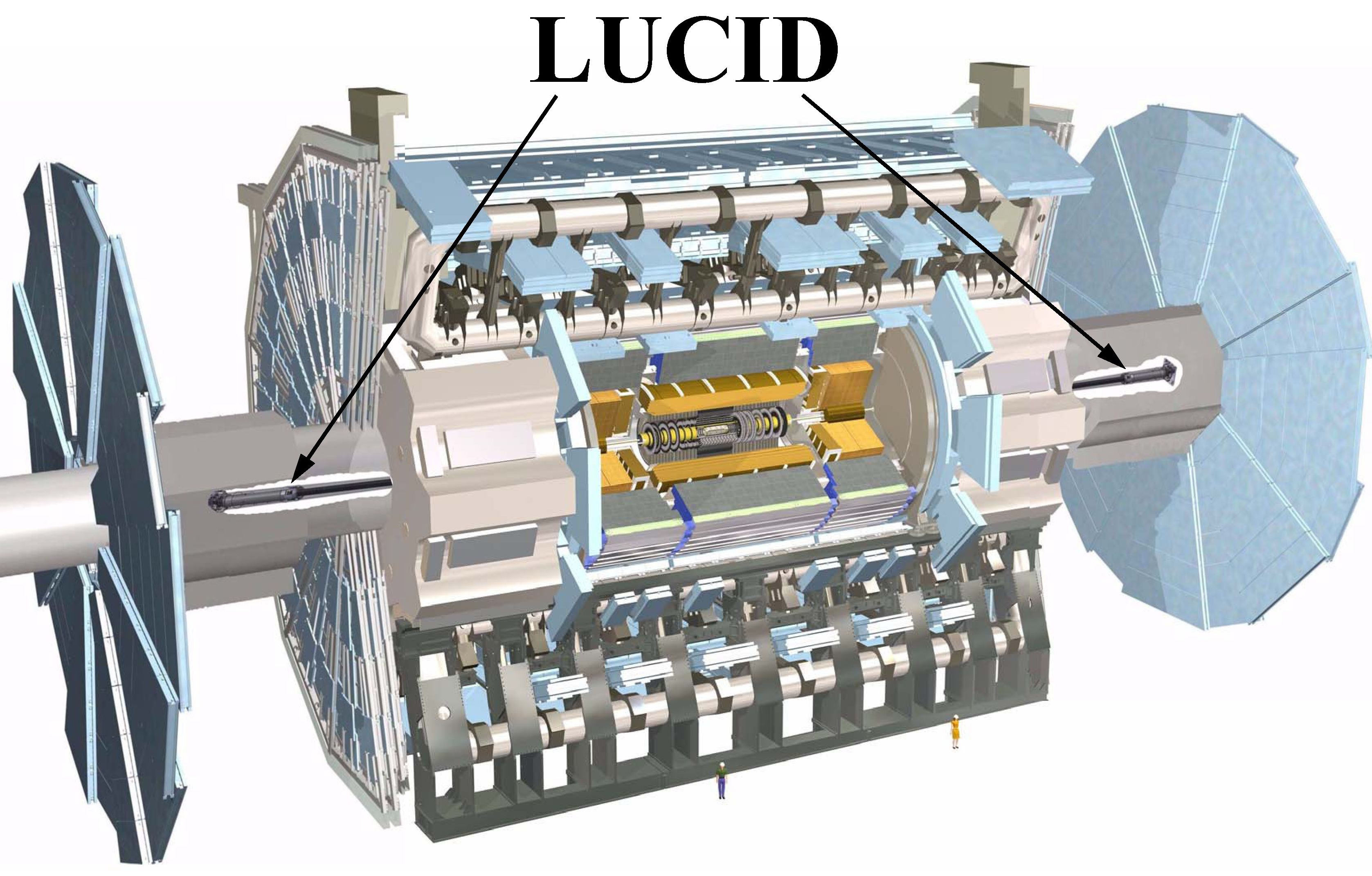
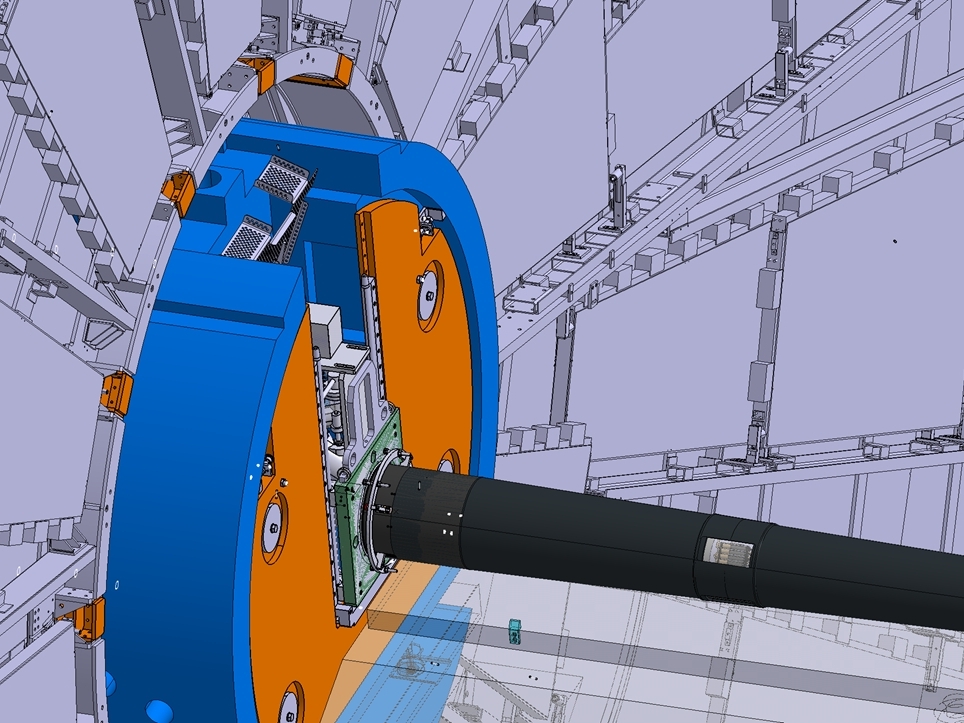
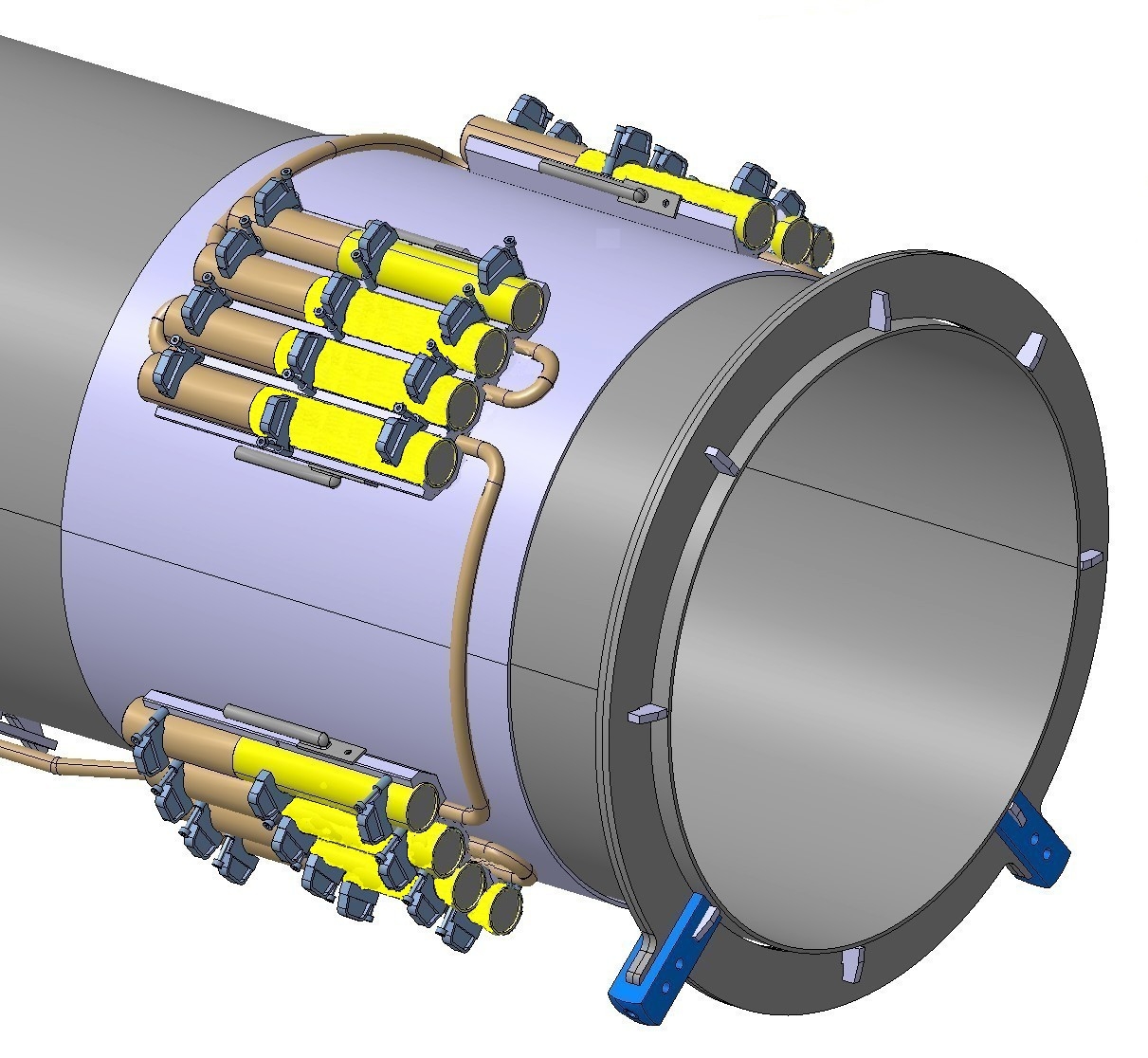
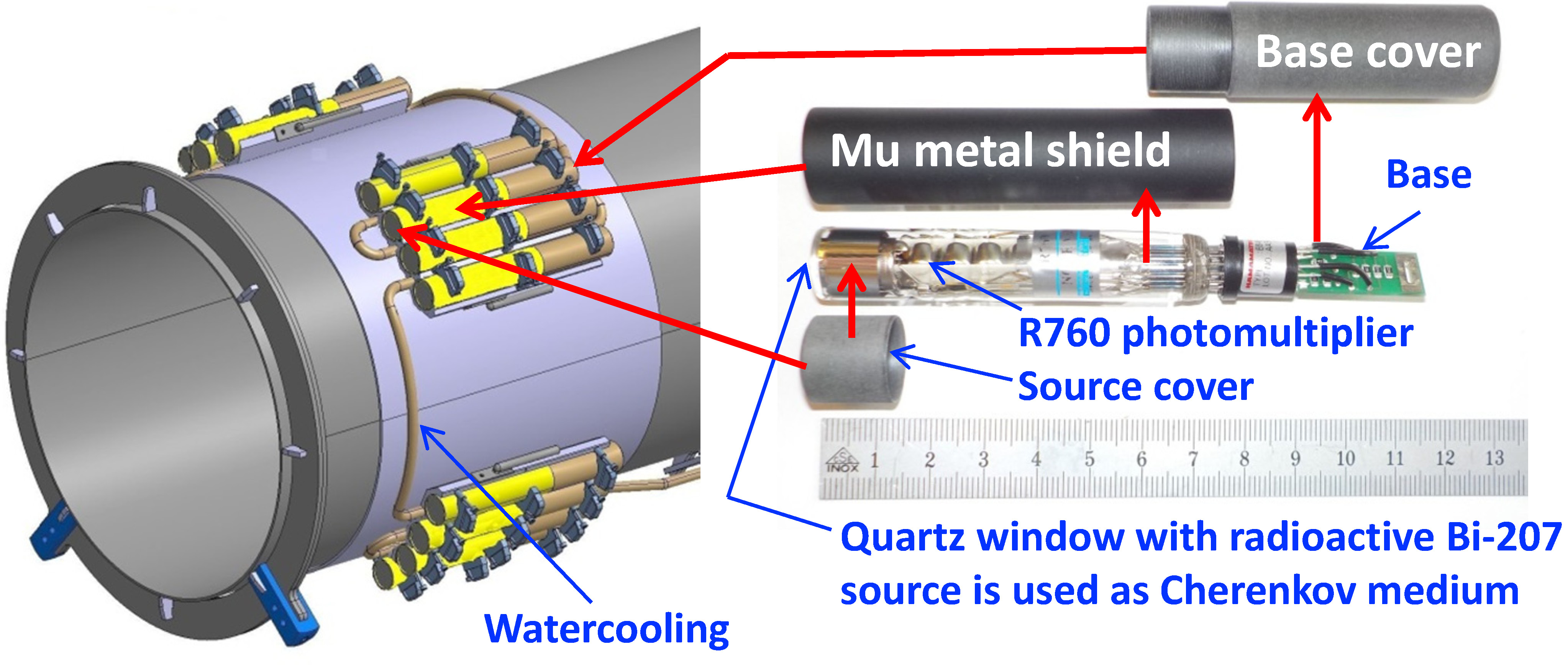
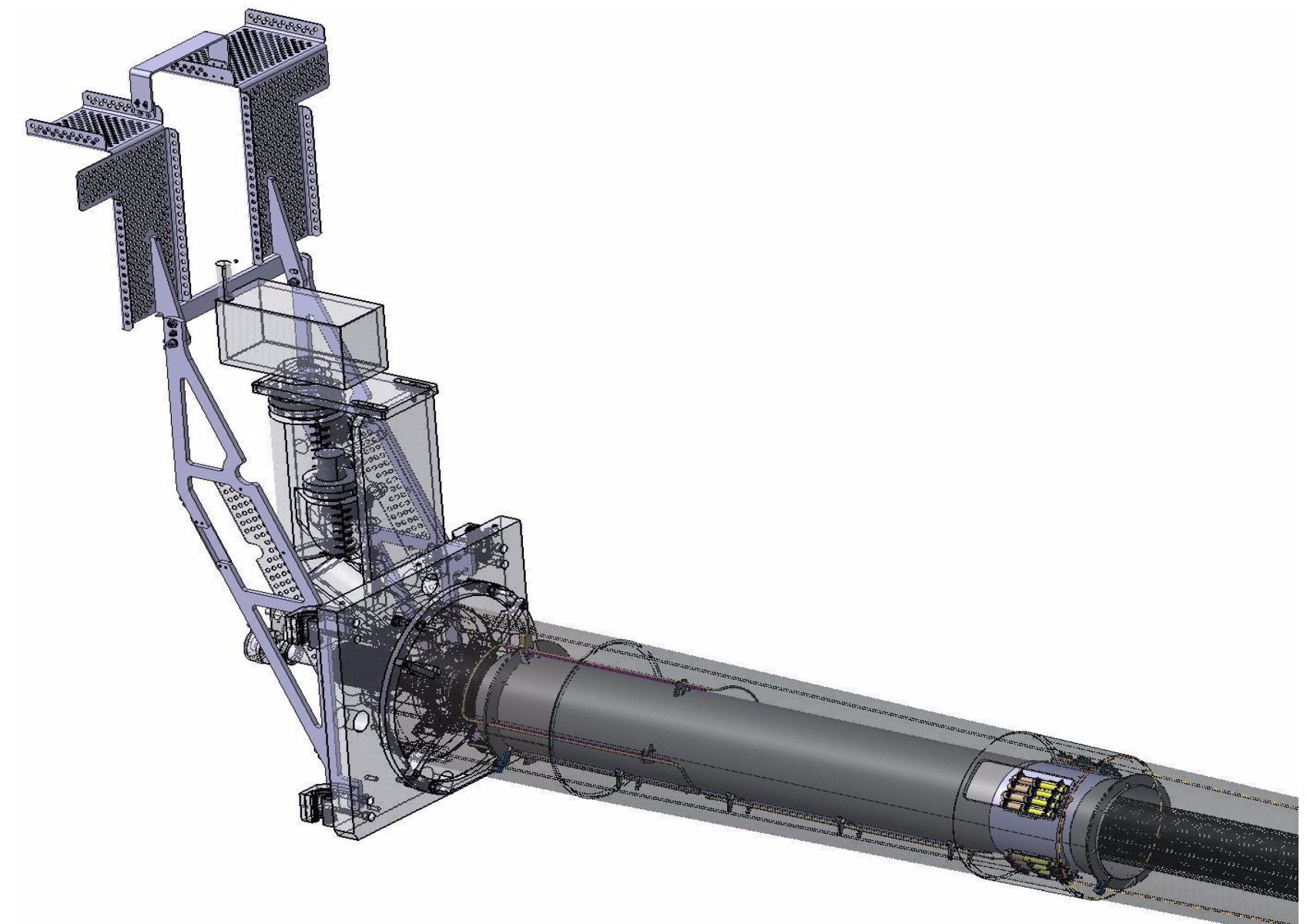
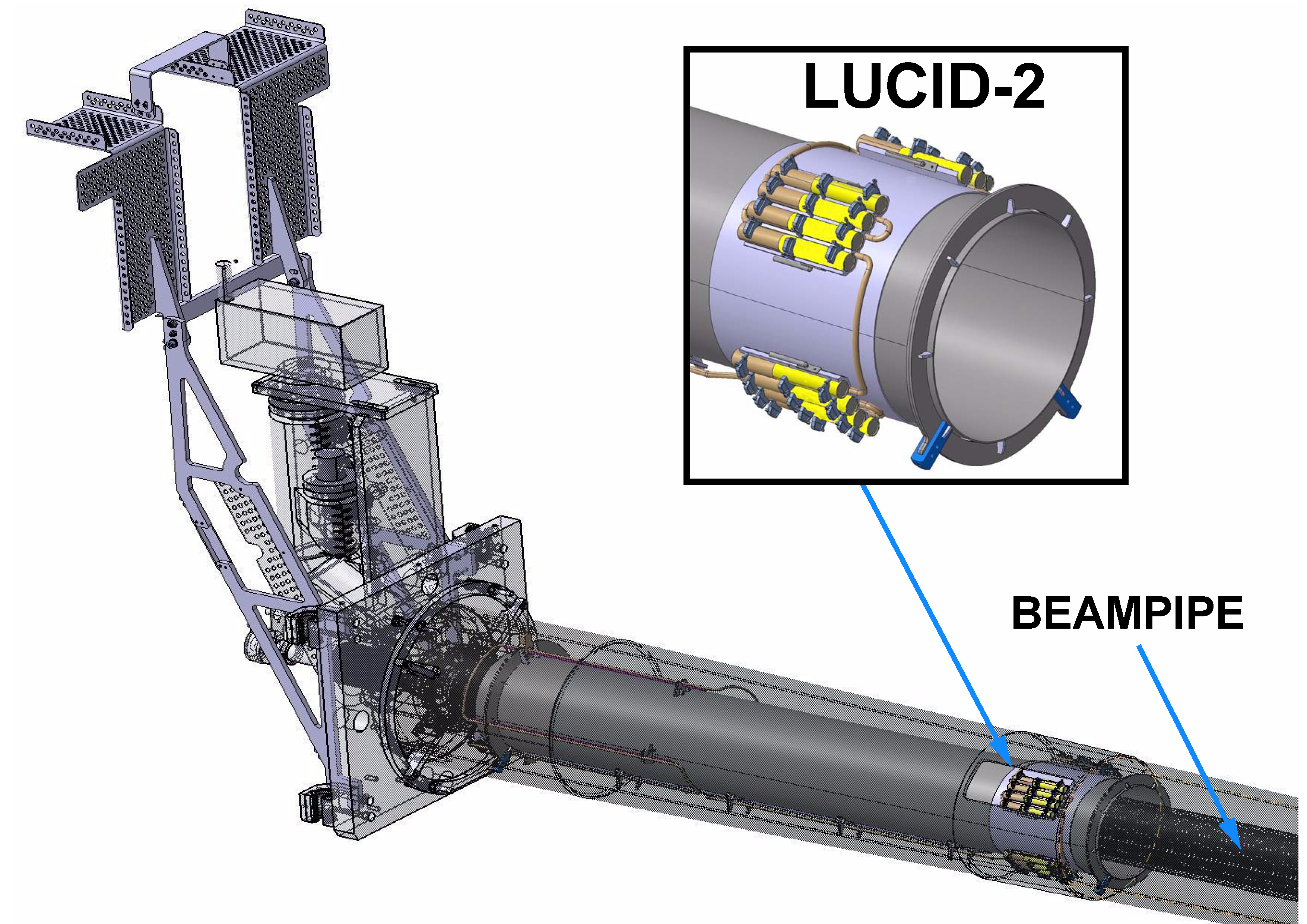
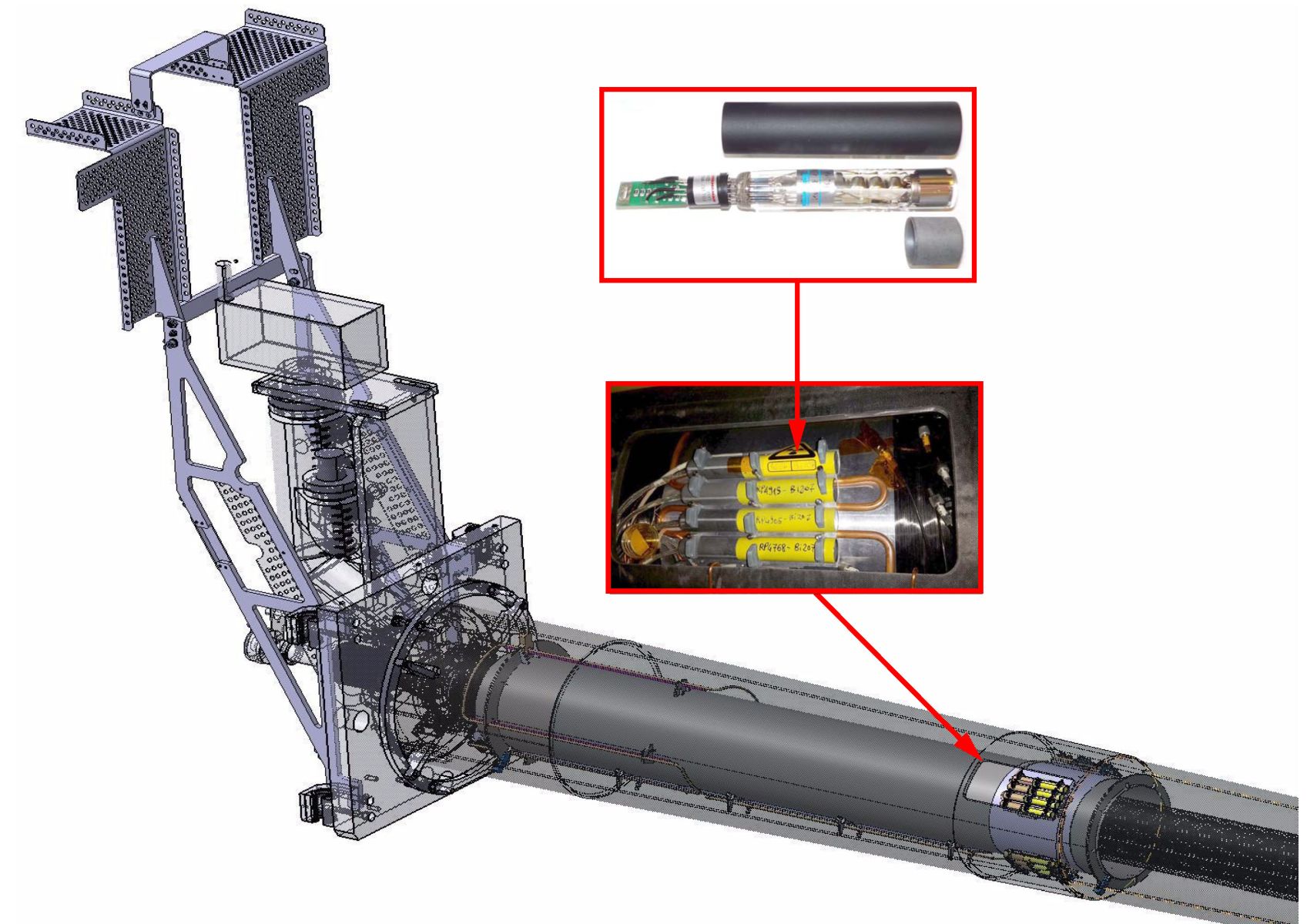
The LUCID II detectors surrounds the beampipe on both sides of the interaction point at a distance of 17 m.
The detectors consists of 16 + 15 Hamamatsu R760 photomulipliers located in four groups around the beampipe and one R1635 Hamamatsu photomultiplier that is located on side C. The center of the photomultipliers is at a distance
of 125 mm from the beamline. Charged particles going through the radiation hard quartz window of the photomultipliers
can produce Cherenkov light that is detected by the photomultipliers. The stability of the detector respons is monitored by
Cherenkov light produced by weak Bi-207 sources placed on the windows of the photomultipliers.
The Bi-207 sources give out monoenergetic electrons from internal conversion that have an energy above the Cherenkov threshold in quartz.
4 + 4 photomultipliers are not turned on and are kept as spares and another
4 + 3 R760 photomultipliers have been modified during the manufacture such that they have a thin ring shaped layer
of aluminium deposited between the quartz window and the photocathode. The center hole of this ring has
a diameter of 7 mm which can be compared to the 10 mm diameter of the photocathode and the layer thus
reduces the acceptance of these photomultipliers with a factor of 2.
ATLAS delivers most precise luminosity measurement at LHC - 24 January 2023 | By the ATLAS Collaboration.
Photos and drawings of the LUCID-1 detector used in LHC run 1 can be found
here
and photos of the LUCID-2 detector used in LHC run 2 can be found
here.

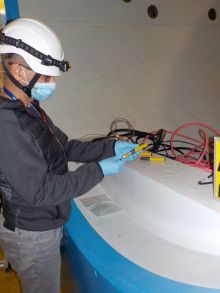
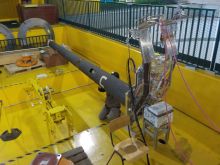


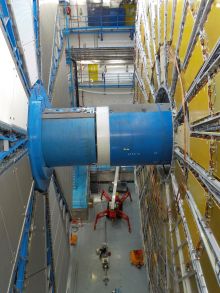
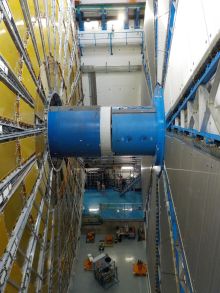
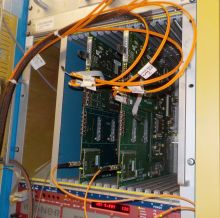


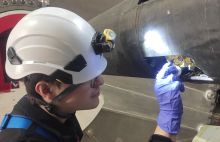
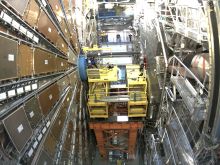
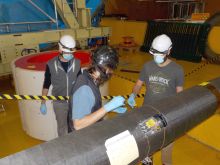
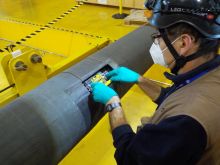
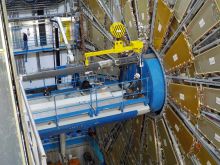
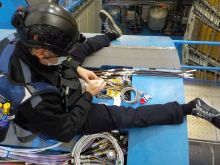
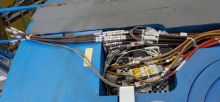
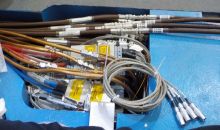
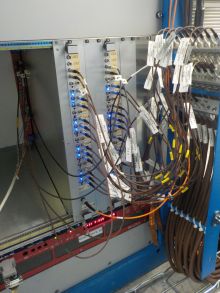
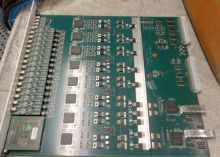
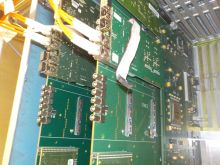

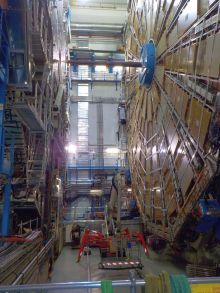
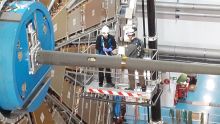
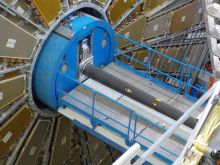
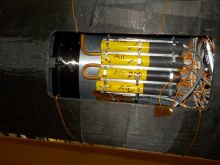
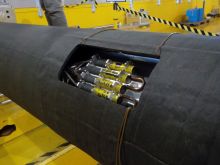
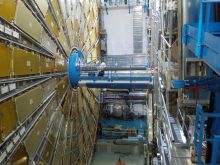


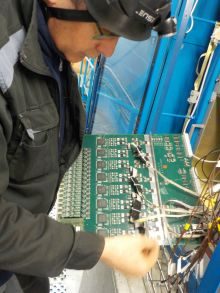

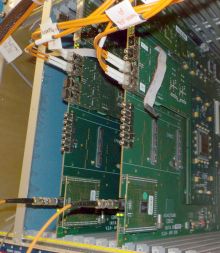
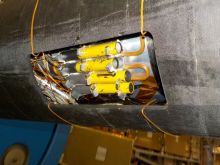
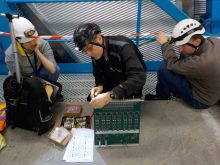
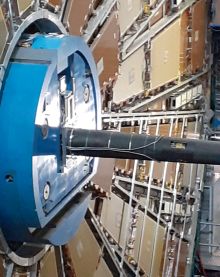
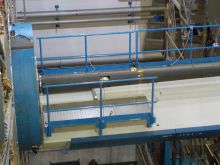

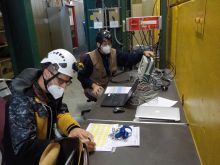
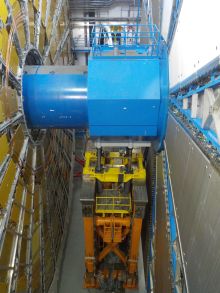
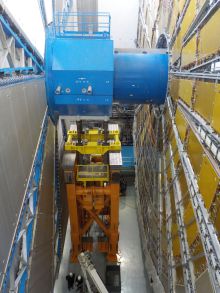
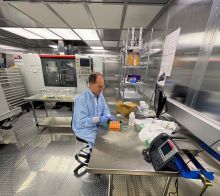
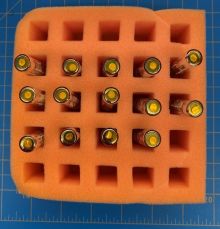
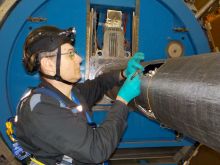
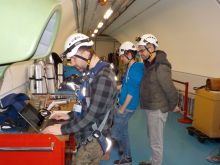
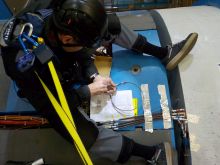
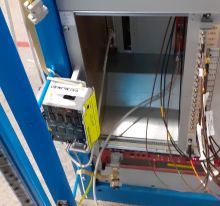


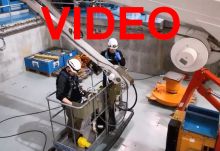

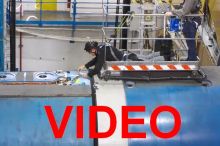
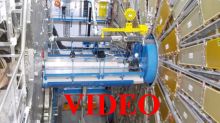
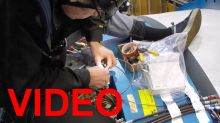
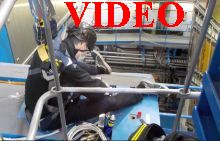
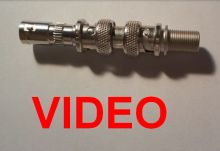
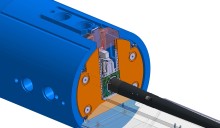
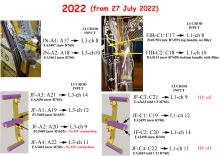
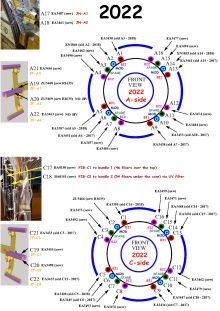
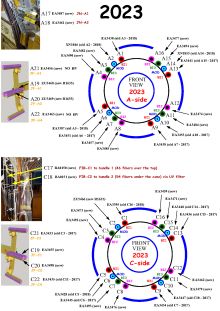

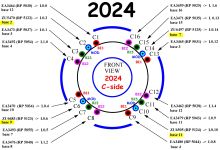

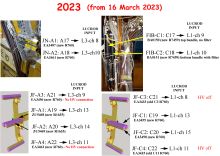

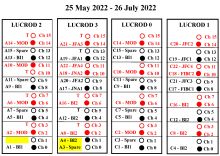
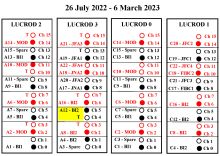
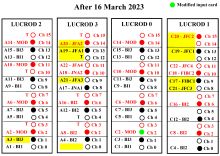
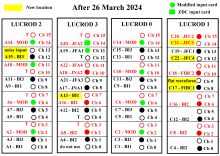
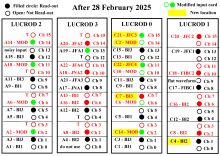
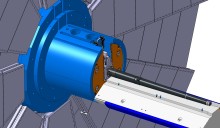
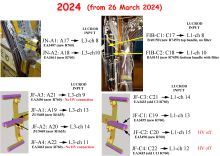
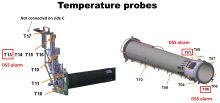
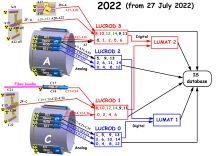
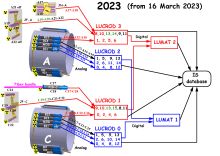
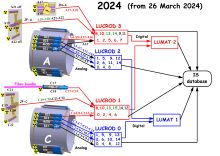

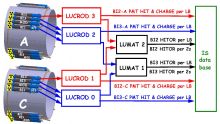
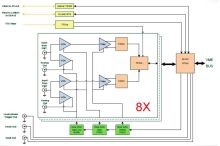
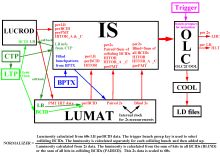
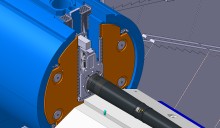

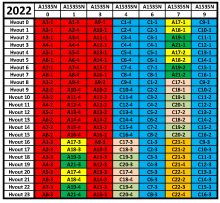
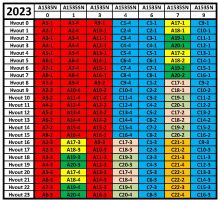
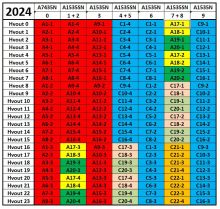

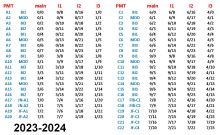

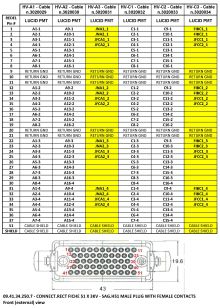

![]() The LUCID-3 detector for the HL-LHC
The LUCID-3 detector for the HL-LHC 
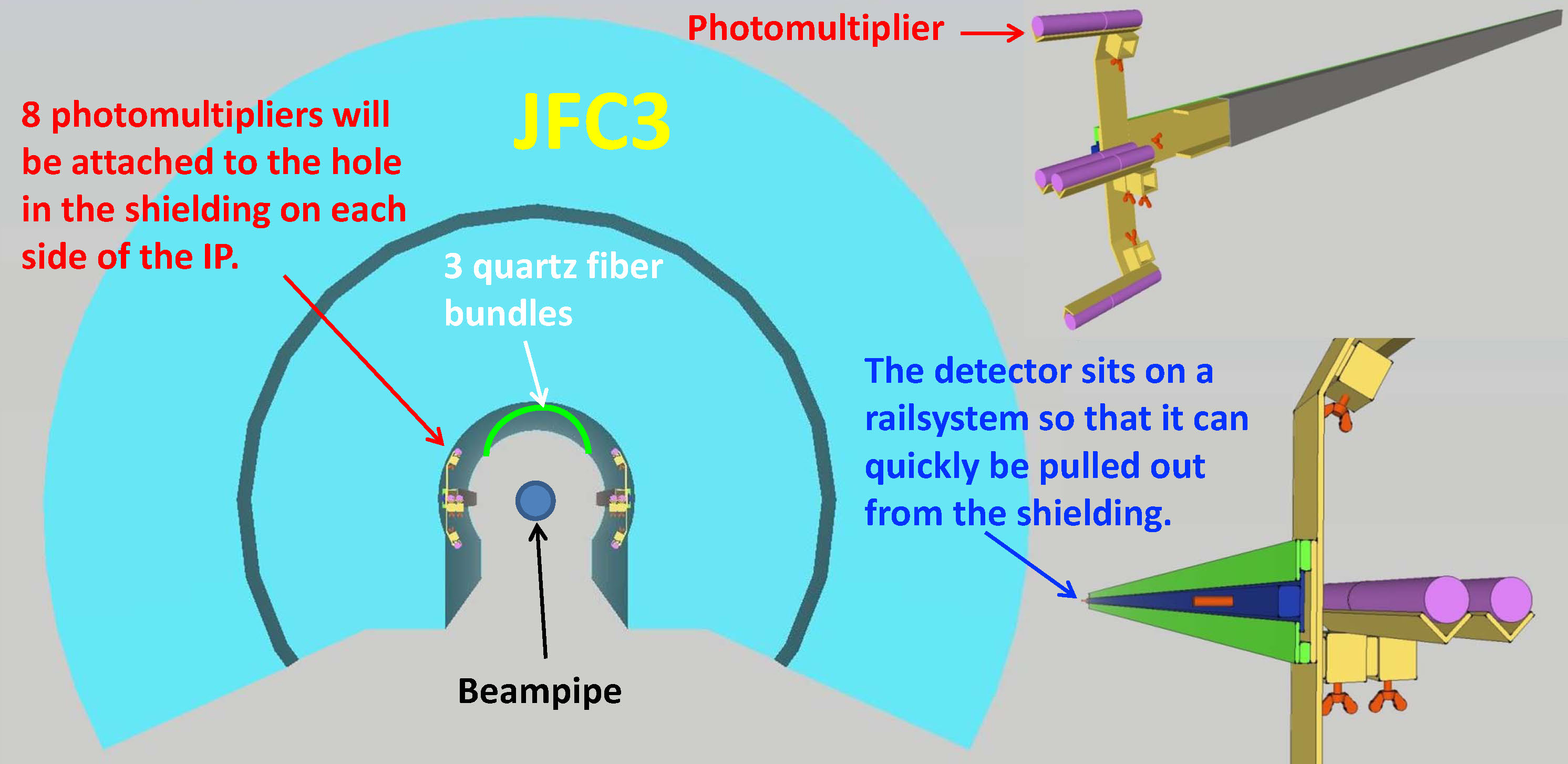
LUCID-3 is an upgrade project in the ATLAS experiment for the high luminosity LHC (HL-LHC). The present
LUCID-2 detector
will not work at the HL-LHC because of hit-saturation which occurs when all channels in the detector detects
particles for almost all colliding proton bunches. Additional challenges for LUCID at the HL-LHC will be the high radiation
levels which requires the possibility to change photomultipliers every year and new LHC vacuum equipment (the VAX) which
will be installed close to LUCID.
Four main detector designs have been considered and studied:
1. A photomultiplier detector similar to LUCID-2 but attached to the forward shielding;
2. A fiber detector attached to the forward shielding;
3. A detector with modified low-acceptance photomultipliers attached to the beampipe;
4. A fiber detector attached to the VAX equipment and the beampipe.
The design proposals will be evaluated in the next LHC running period (run 3) with four prototype detectors that
each have two channels and that are read-out with the electronics used previously for the old LUCID-2 fiber detector.
The data that is collected with these prototype detectors will make it possible to select the best LUCID-3 detector
design for the HL-LHC (run 4) so that the new detector can be built in the next long LHC shutdown (LS3).
Presentations at conferences:
Design report presented to the LHCC:
The LUCID 3 detector for the ATLAS Phase-II Upgrade - CERN-LHCC-2021-016
The upgrade of the ATLAS Luminosity detector (LUCID) for HL-HLC
Federico Lasagni Manghi
15th Pisa Meeting on Advanced Detectors, La Biodola - Isola D'elba, Italy, 22-28 May 2022
Poster
Proceedings
LUCID-3: the upgrade of the ATLAS luminosity detector for High Luminosity LHC
Vincent Hedberg
41st International Conference on High Energy Physics (ICHEP 2022), Bologna, Italy, 6-13 Jul 2022
Slides
Proceedings
Video
LUCID-3: the upgrade of the ATLAS Luminosity detector for High-Luminosity LHC
Benedetto Giacobbe
16th Topical Seminar on Innovative Particle and Radiation Detectors, Siena, Italy, 25-29 Sep 2023
Slides
Proceedings
Upgraded Lucid and Zero Degree Calorimeter Detectors for ATLAS at the High Luminosity LHC
Antonio Sbrizzi
31st International Workshop on Deep Inelastic Scattering, Grenoble, France, 8-12 Apr 2024
Slides
LUCID-3: the upgrade of the ATLAS Luminosity detector for High Luminosity LHC
Davide Cremonini
16th Pisa Meeting on Advanced Detectors (Pisameet 2024), La Biodola, Isola D'elba, Italy, 26 May-1 Jun 2024
Poster
Proceedings
LUCID-3: Upgrade of the ATLAS Luminosity Monitor for the High Luminosity LHC
Jack Lindon
42nd International Conference on High Energy Physics (ICHEP2024) 18-24 July 2024 Prague, Czech Republic
Poster
Proceedings
LUCID, the ATLAS luminosity detector in LHC Run-3 and its upgrade for HL-LHC
Federico Lasagni Manghi
2025 European Physical Society Conference on High Energy Physics (EPS-HEP 2025), Marseille, France, 7-11 Jul 2025
Slides
Proceedings
LUCID, the ATLAS luminometer in LHC Run 3 and its upgrade for HL-LHC
Elisa Sanzani
14th International Conference on New Frontiers in Physics 2025 (ICNFP 2025), Kolymbari, Crete, Gr, 17-31 Jul 2025
Slides
LUCID, the ATLAS luminosity detector in LHC Run-3 and its upgrade for HL-LH
Davide Cremonini
17th Topical Seminar on Innovative Particle and Radiation Detectors , Siena, It, 15-19 Sep 2025
Slides
Proceedings
The fiber prototype for the upgrade of the LUCID detector in the ATLAS experiment for HL-LHC
Davide Cremonini
164th LHCC Meeting, CERN, Geneva, Switzerland, 17-20 Nov 2025
Poster
Cherenkov detectors in the extreme LHC environment: LUCID PMTs and fibers
Davide Cremonini
7th International workshop on new Photon-Detectors, Bologna, Italy, 3-5 Dec 2025
Poster
A LUCID-3 detector attached to the forward shielding
This is the baseline proposal for LUCID-3. Both a pure photomultiplier detector that is monitored with radioactive Bi-207
and a fiber detector monitored with Bi-207 and LED light are considered. Both detectors can be replaced every year
during LHC winter shutdowns in case of radiation damage.



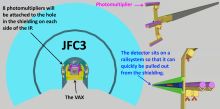



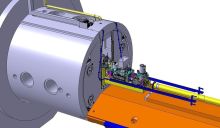
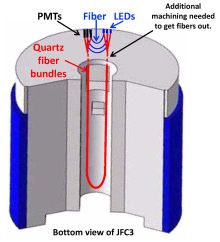
A LUCID-3 detector attached to the beampipe
This detector would be similar to the present LUCID-2 detector. It has the advantage of not being removed every winter shutdown
but this also means that it cannot easily be replaced in case of radiation damage. It also will suffer much more from the problem
of hit-saturation.



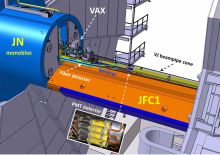
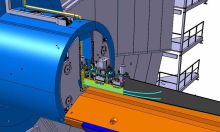

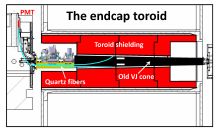

![]() The LUCID-3 prototype detectors
The LUCID-3 prototype detectors 
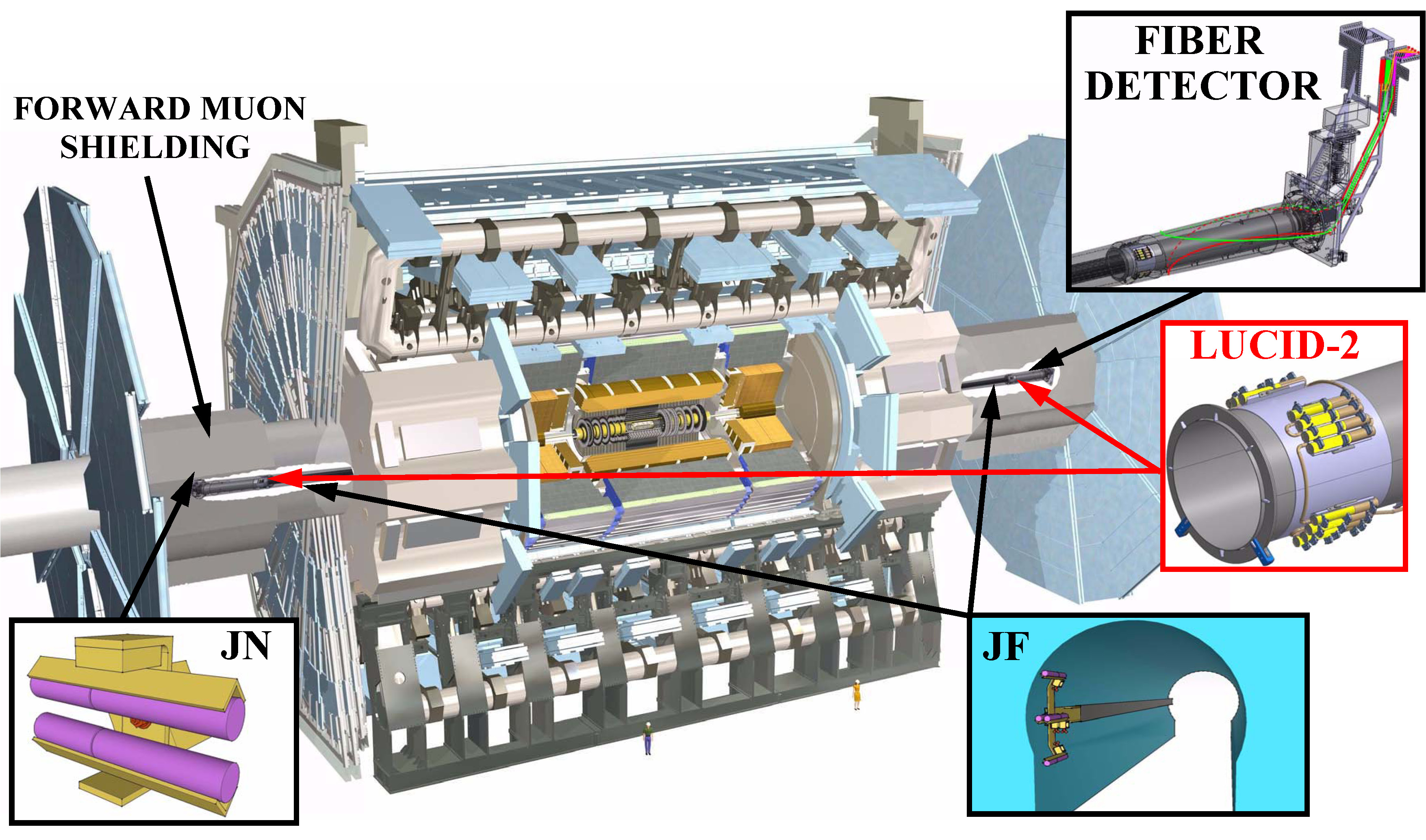
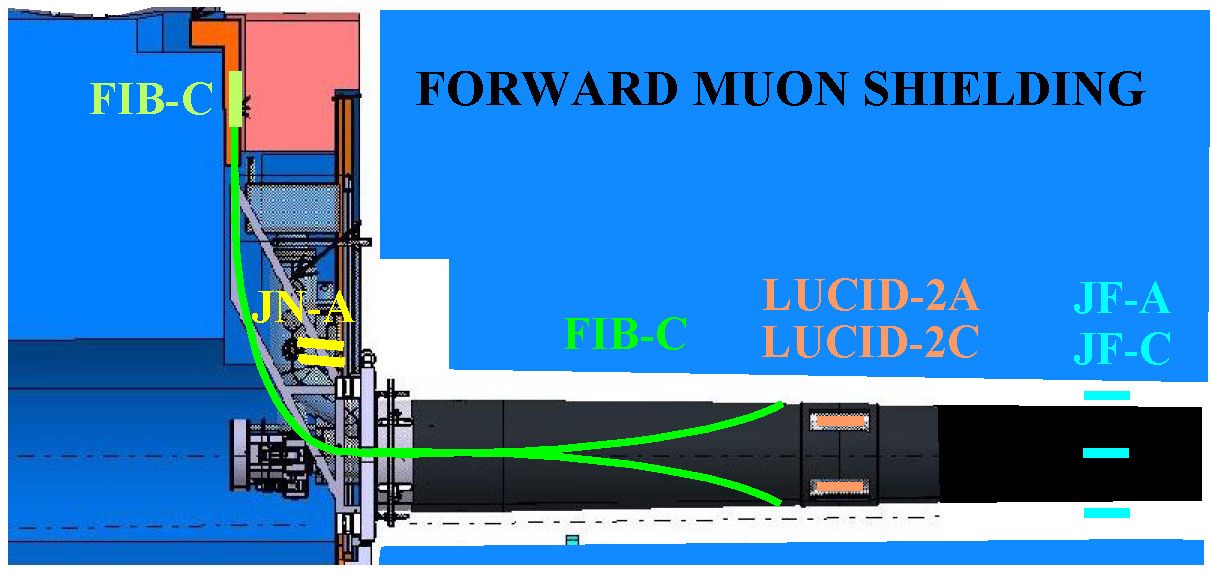
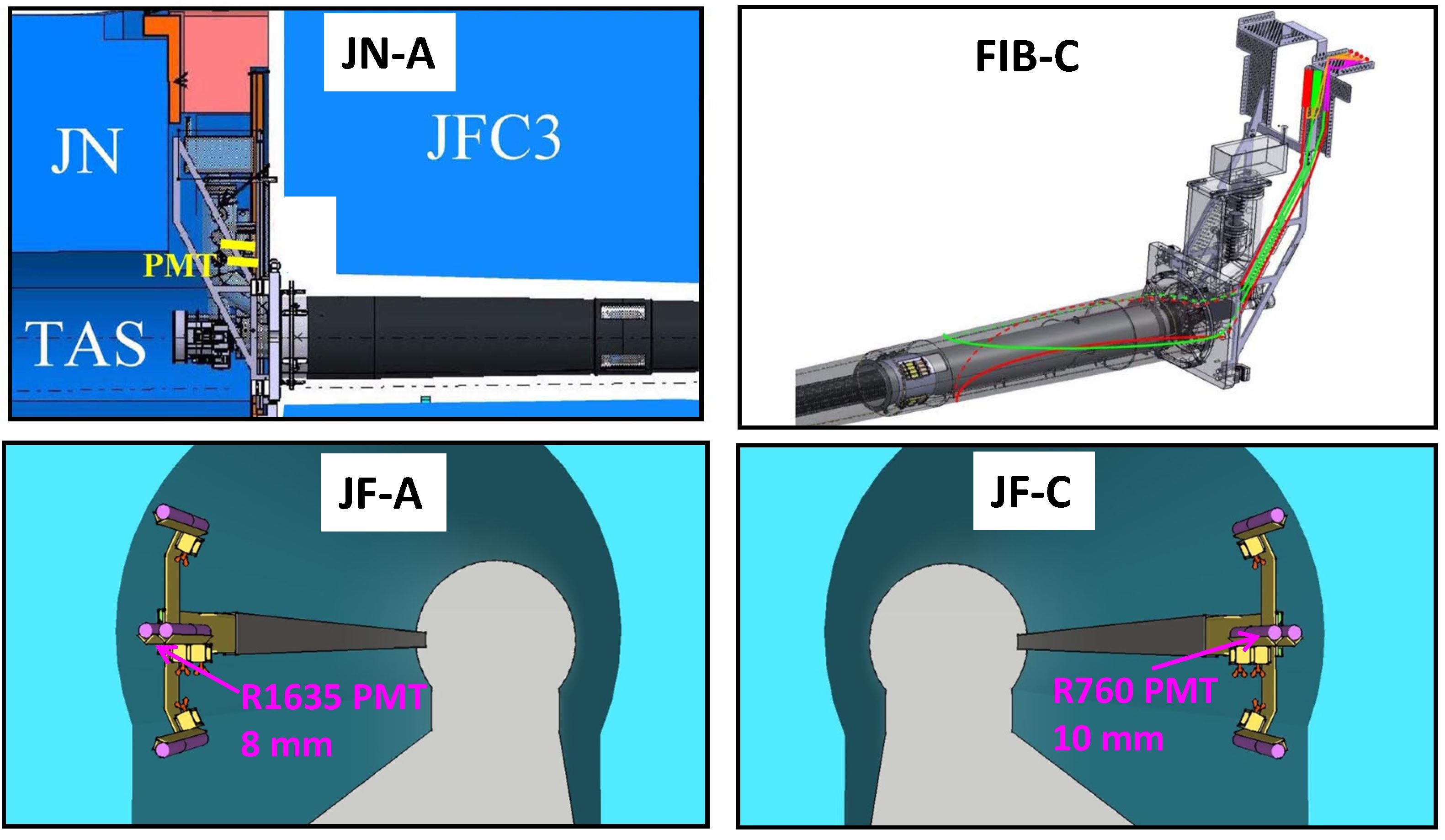



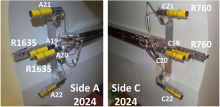



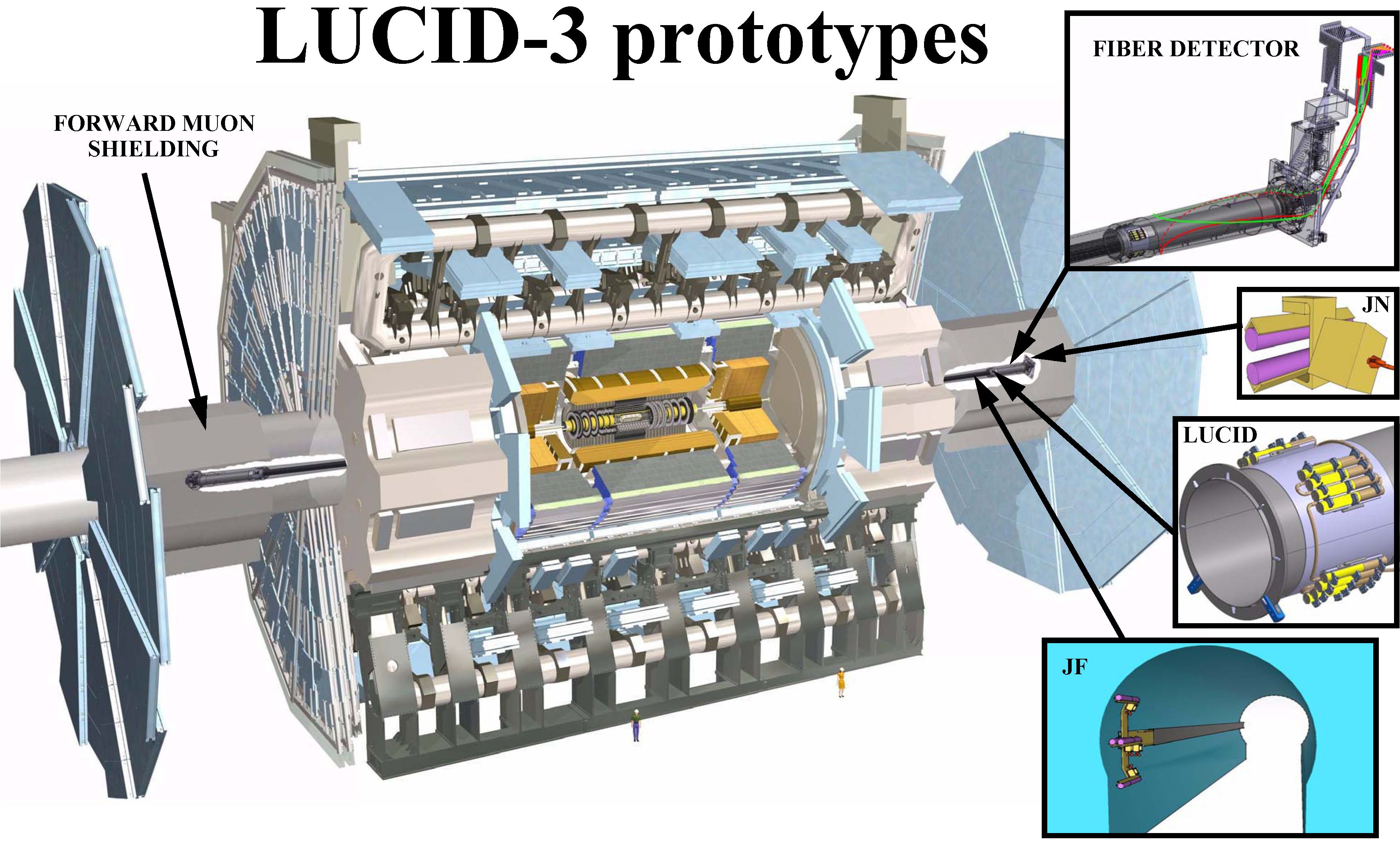
The JN-A prototype detector
This is a low-rate detector installed behind the upper part of the forward shielding (JFC3). The idea is to see if it can provide a
luminosity measurement that does not need any corrections at high luminosity.
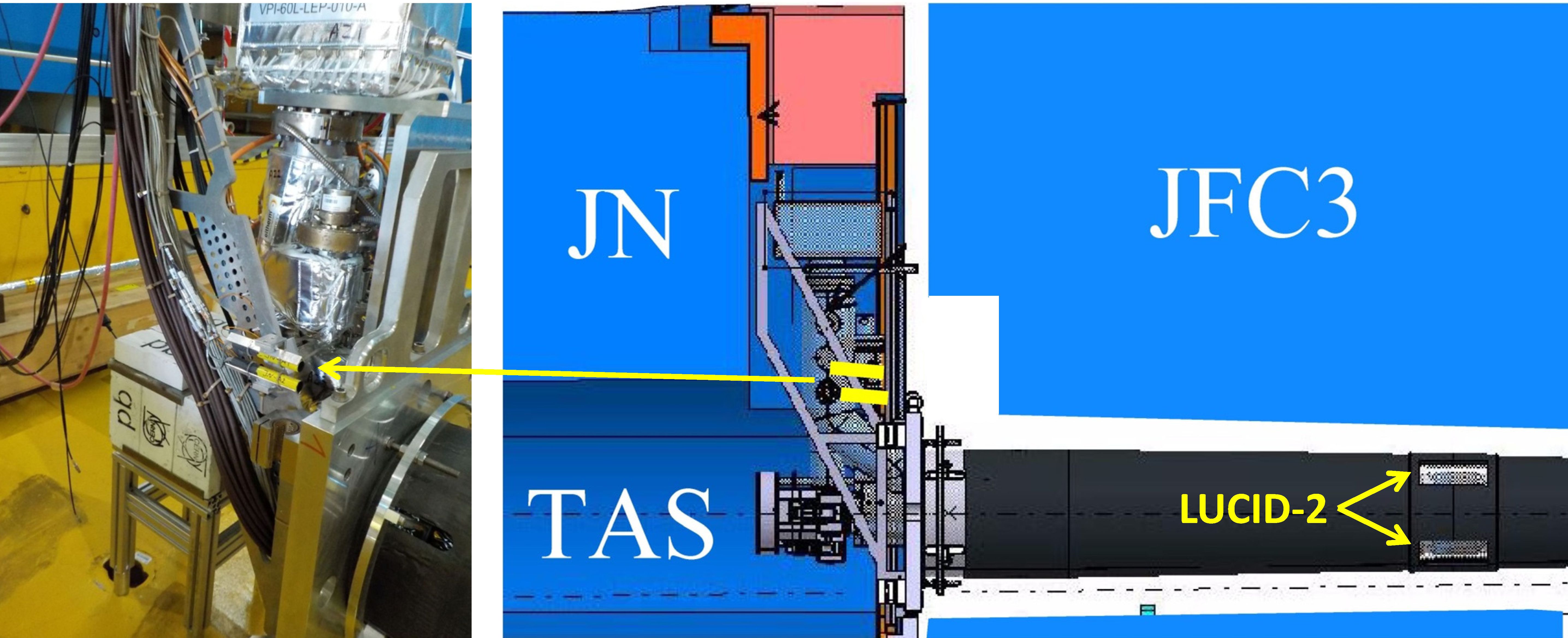

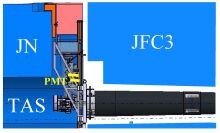
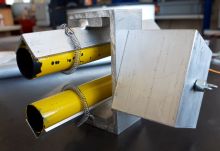
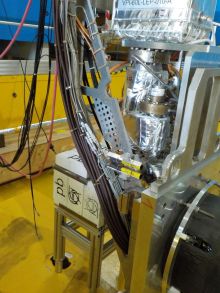


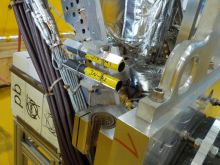
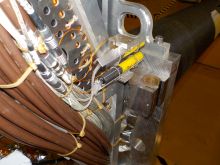
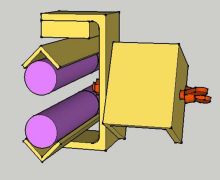
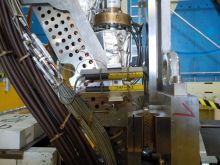
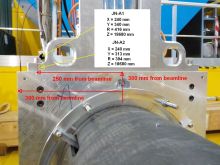
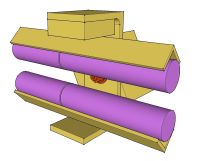
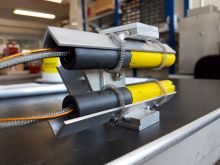
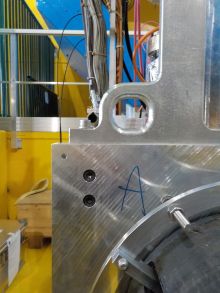
The JF-A prototype detector
This is a prototype of the baseline LUCID-3 detector that is attached to the forward shielding.
It uses two smaller R1635 photomultipliers that have been specially made for LUCID with a quartz window by Hamamatsu.
LUCID has previously used modified R760 photomultipliers with a ring-shaped aluminium deposit on the inside
of the window to lower the acceptance but these photomultipliers produces many small signals at the edge of the ring.
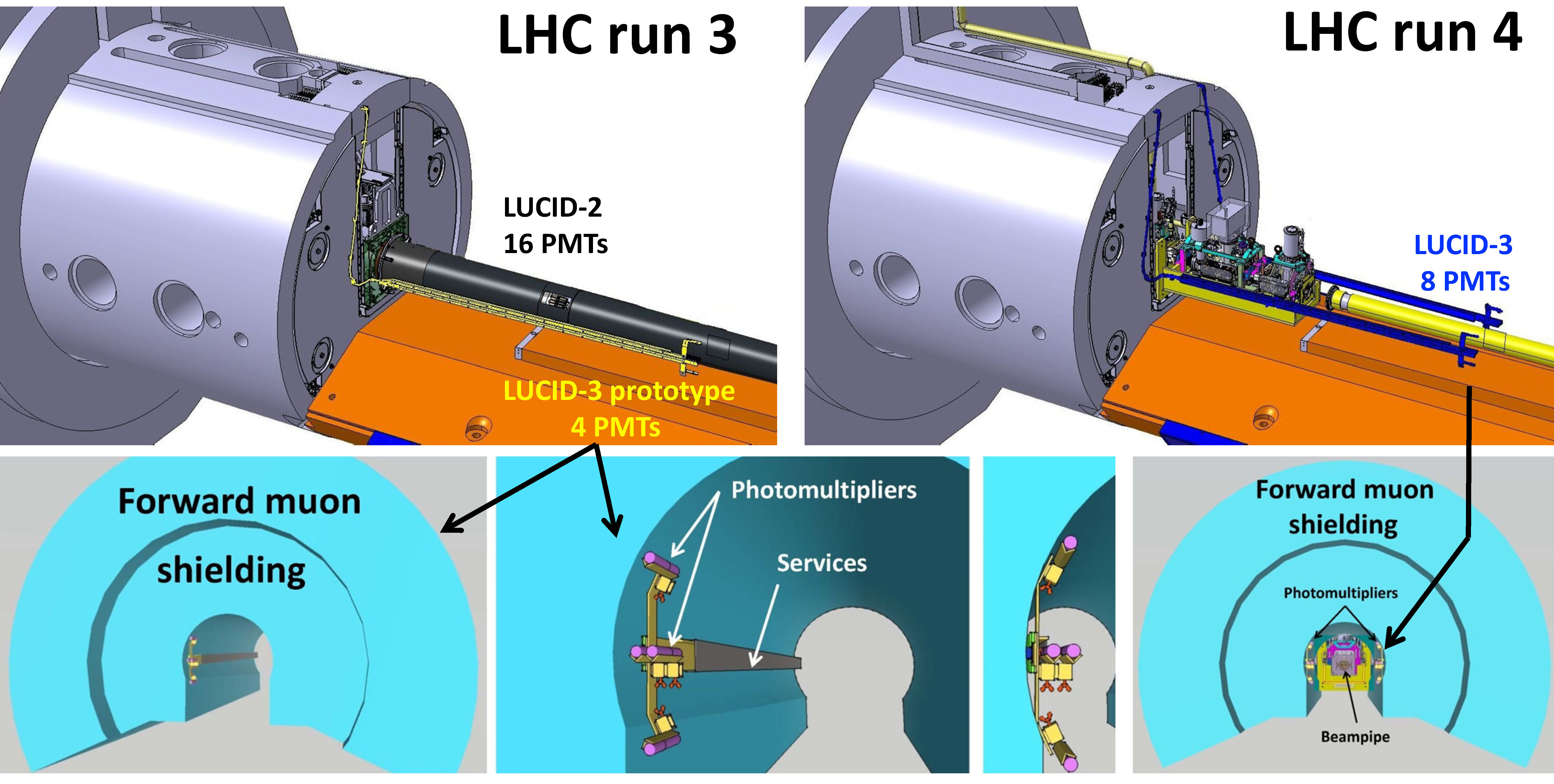



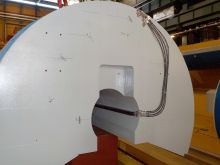
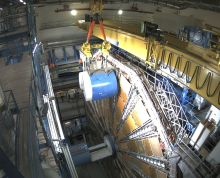
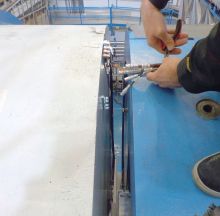

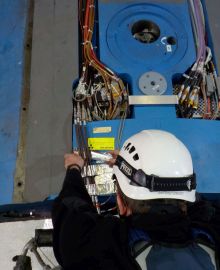
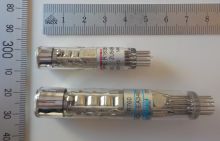
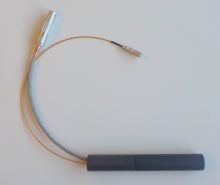


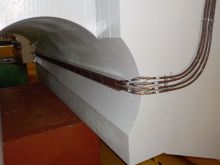
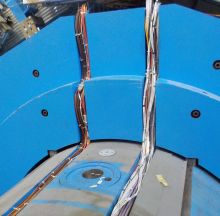
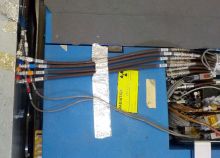


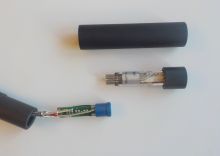

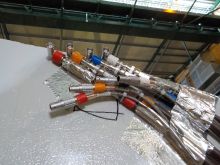
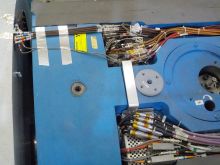
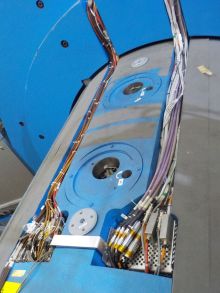
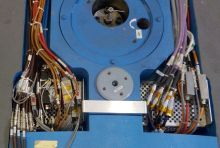
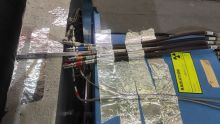
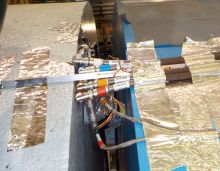
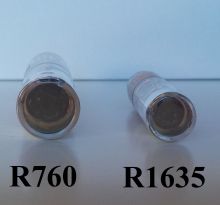
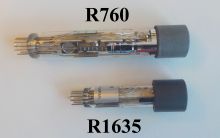
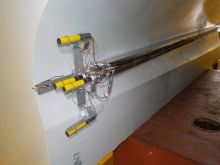
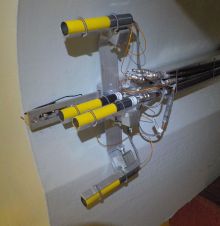
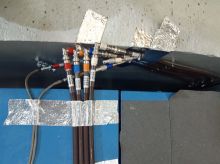
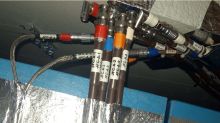
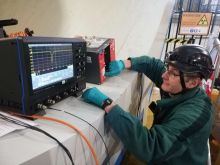

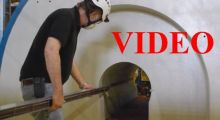
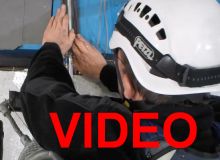
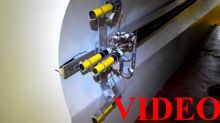

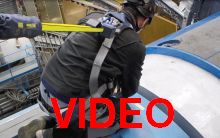
The FIB-C prototype detector
This detector uses bundles of optical quartz fibers as the Cherenkov medium instead of photomultiplier windows.
The advantage is that the photomultipliers can be located in a shielded location so that they will not suffer from radiation damage.
The gain of the larger R7459 photomultipliers (25 mm diameter) is monitored with radioactive Bi-207 sources while any radiation damage
to the fibers is monitored by LED light.


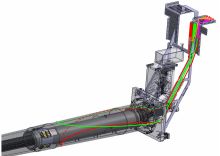
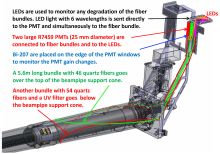
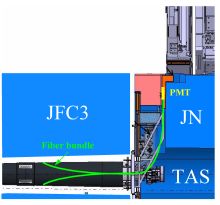
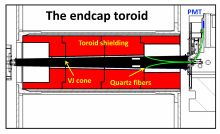
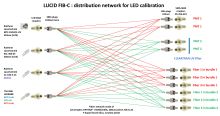

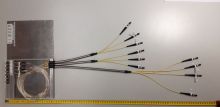
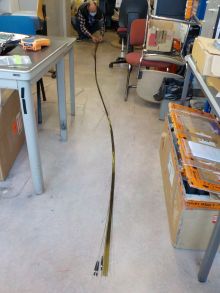

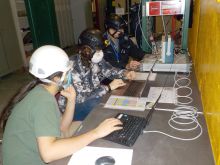
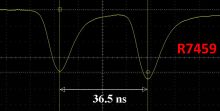



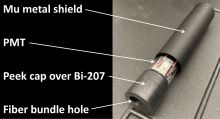


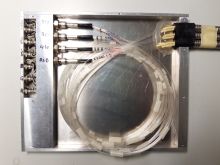

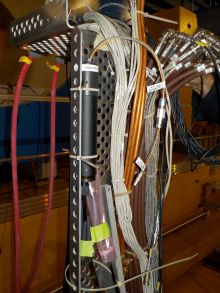

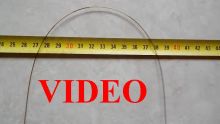
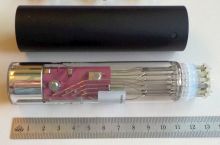
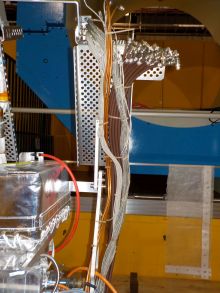
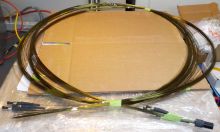

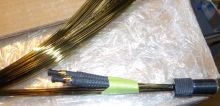
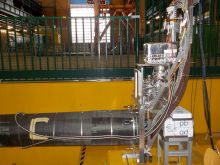
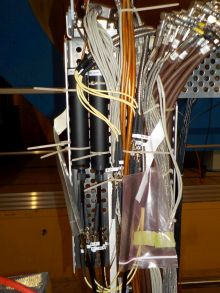
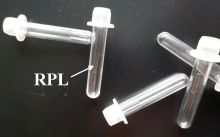
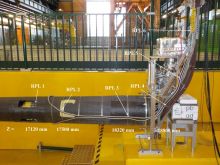

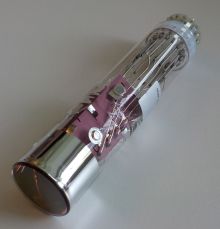

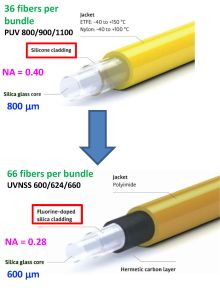
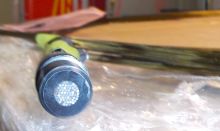
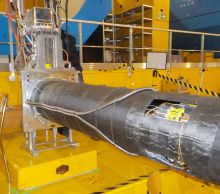
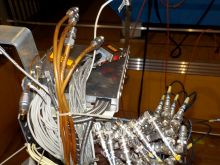
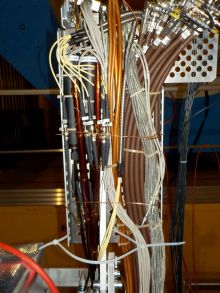
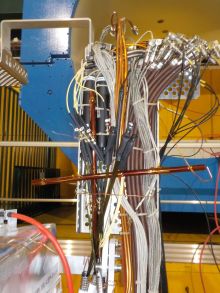
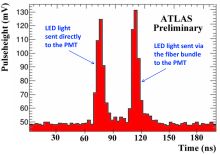
The JF-C prototype detector
This detector is similar to the JF-A prototype detector, except it uses four standard R760 photomultipliers instead
of two new smaller R1635 photomultipliers.

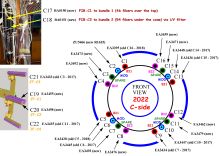
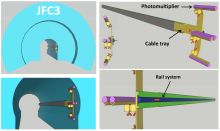
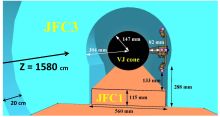
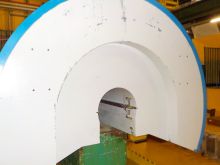
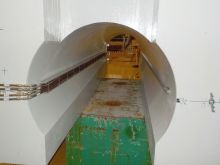
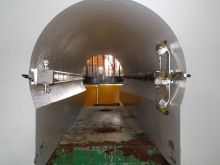

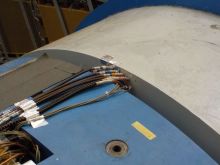



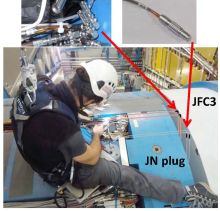
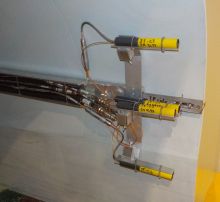
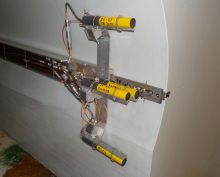
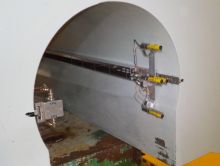
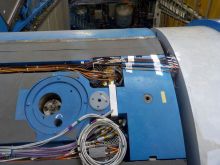
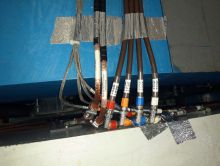
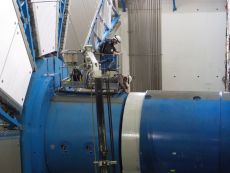


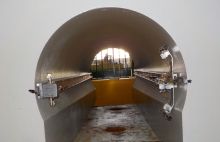

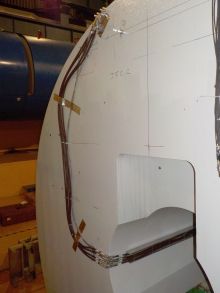
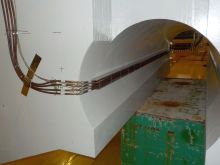
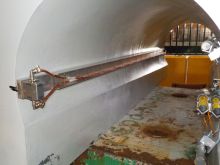

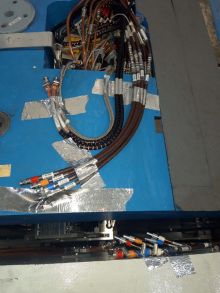


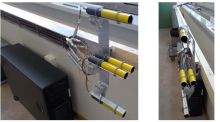
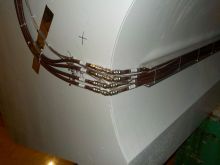
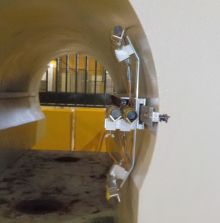
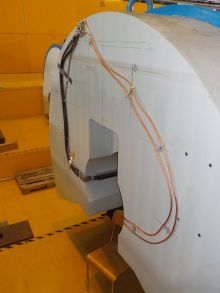
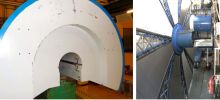
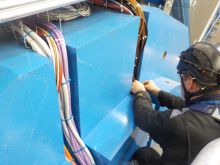
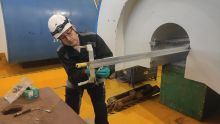

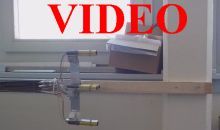
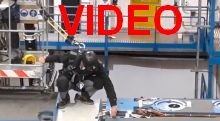
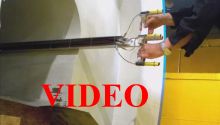
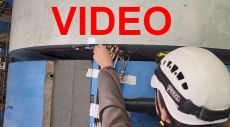

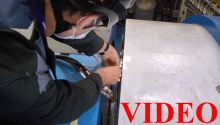
Last update:
6 March 2025